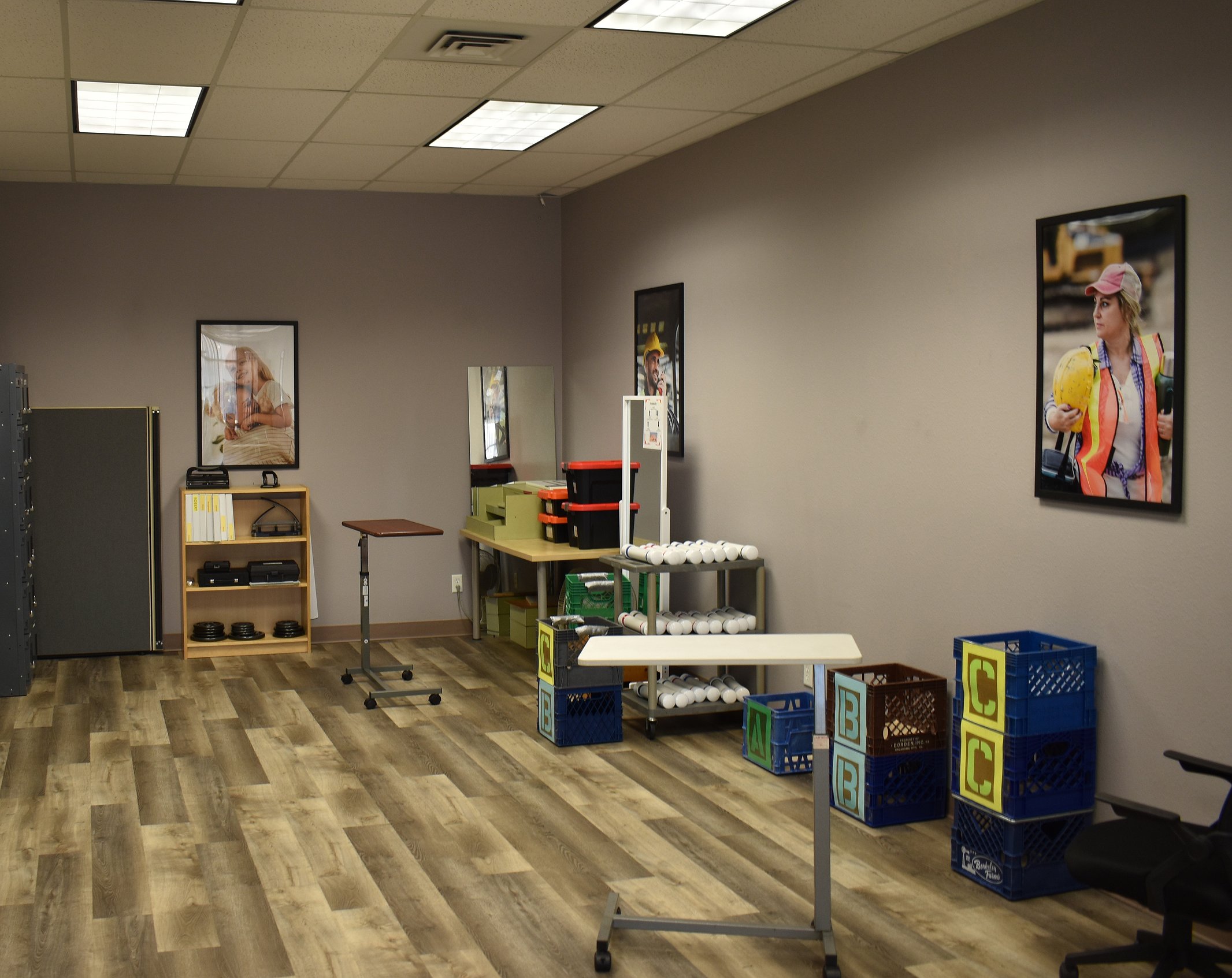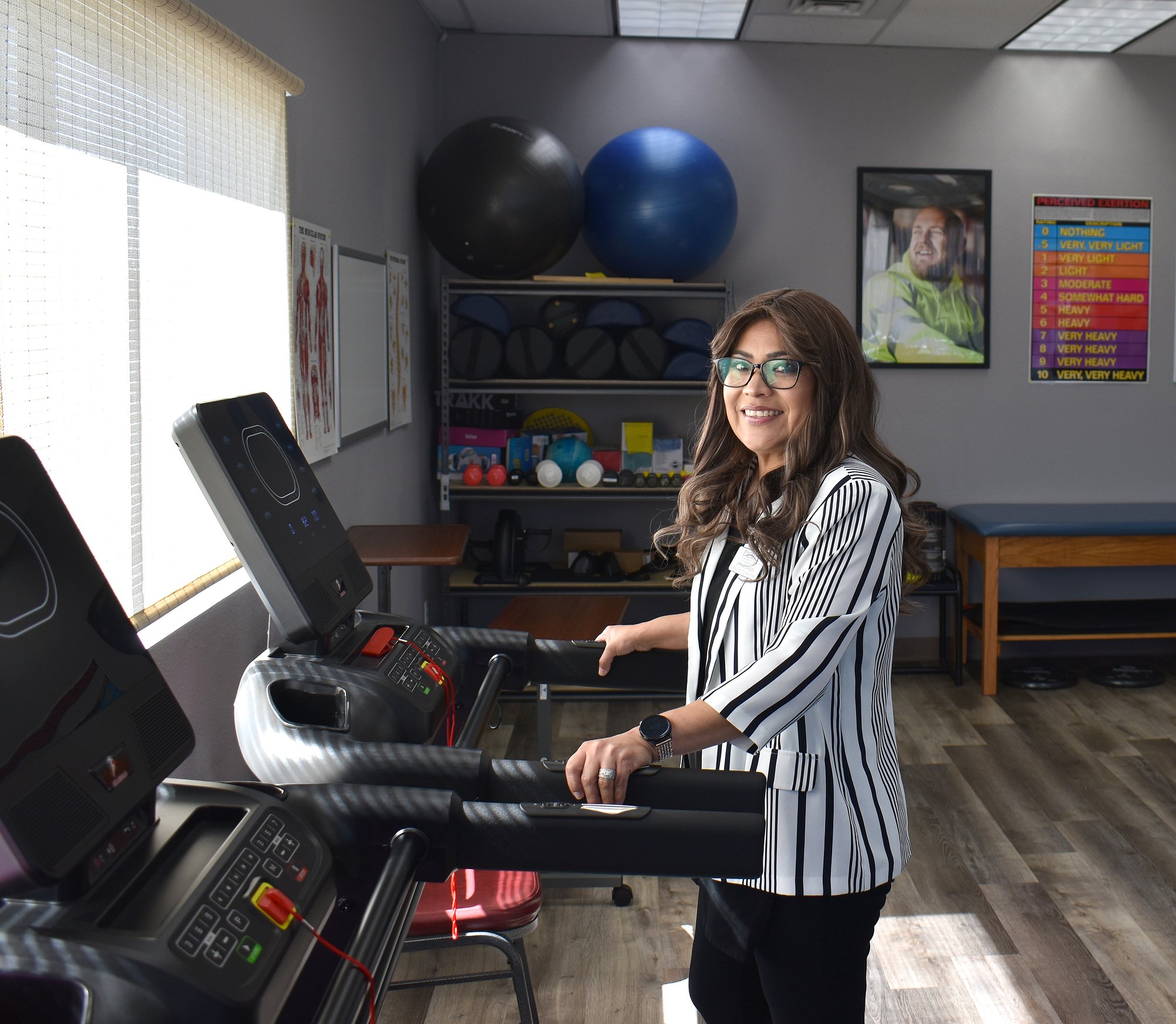Pain relief
JOEL MARTIN | Hagadone News Network | UPDATED 1 year, 3 months AGO
Joel Martin has been with the Columbia Basin Herald for more than 25 years in a variety of roles and is the most-tenured employee in the building. Martin is a married father of eight and enjoys spending time with his children and his wife, Christina. He is passionate about the paper’s mission of informing the people of the Columbia Basin because he knows it is important to record the history of the communities the publication serves. | September 4, 2024 1:20 AM
MOSES LAKE — Getting hurt on the job is no fun. Besides the injury itself, you might have to take days, weeks, even months off work, while collecting a fraction of your regular paycheck. There are doctor visits, bureaucratic hassles, and what seems like enough paperwork to use up a national forest. And when you’ve exhausted all your physical and psychological energy, sometimes it still hurts.
“When you have an injured worker that has been off work, and they're dealing with pain and it's been three months or more, that pain usually becomes chronic pain,” said Bobbi Meins, business and program development director for Pacific Rehabilitation Services, which opened its office in Moses Lake a couple of weeks ago.
Pacific Rehabilitation specializes in return-to-work therapy for workers who have been hurt on the job and can’t stop hurting after about three months, Meins said. The system is an approach known as SIMP, for Structured Intensive Multidisciplinary Program, and includes medical, physical and occupational therapy, psychology and behavioral health and vocational counseling. Patients undergo a 20-day program in groups of seven.
“(Patients) come in the morning, they have occupational therapy and physical therapy. They take a break, come in (a classroom) for a couple of hours, do classes, maybe see one of our counselors, take a break for lunch, come back for one more class, and then physical therapy again,” Meins said. “It’s really geared at getting that core strength back.”
Taking patients in a group allows them to reinforce each other in the process, said Clinic Coordinator Susie Soto.
“There's six other people, and they're coming in like when you start the first day of school,” Soto said. “But then when they find out that there's other people that are also in the same boat, they start talking to each other, they start encouraging each other … And now, they are laughing and joking around with each other. They're in pain, because that's what they're here for, but they're sharing the pain.”
“They realize they're not the Lone Ranger,” Meins said.
The thing about chronic pain, Meins explained, is that it’s controlled by a neurological gate at the base of the spine that can either let pain signals through to the brain or stop them.
“A lot of things open that gate, such as stress or lack of sleep, not eating correctly, not sitting correctly, not exercising, which increases your pain,” Meins said. “You can learn, through meditation, through getting fit, through really focusing on your core muscles, to reduce that stress and thus reduce the pain.”
The physical therapy part is pretty straightforward. The equipment is nothing fancy; there are some treadmills and exercise bikes and there’s a physical therapist on staff to help with exercises.
“We of course modify everything, because everybody's injuries are a little bit different, so we need to make sure it's tolerable,” the therapist said. “We do things like stretching and strengthening. It's mostly about getting movement back, because a lot of people aren’t free to move when they get injured, but moving is how we live life. We need to be able to move.”
Occupational therapy focuses on things like fine motor skills and body mechanics, like the safe way to push or pull a heavy object or manipulate nuts and bolts.
“People think of the word occupation as your job, but occupational therapists talk about the occupations of life,” the physical therapist said. “Work is the main thing for Labor and Industries, but it extends to our occupation as a mother, or occupation as somebody who plays golf.”
The psychological side isn’t to be ignored either. Pacific Rehabilitation has counselors to help patients cope with their situation.
“You can imagine, if you can't go back to work, how that impacts your family, your finances,” Meins said. “Depression and anxiety are huge for these patients, so putting them with a therapist (who is) listening, teaching them how to relax, how to do mindfulness, to let your body sort of relax and not get stressed out. A lot of people are afraid to go back to work because they're afraid they're going to get hurt again. It’s a scary thing.”
Moses Lake’s facility is Pacific Rehabilitation’s third. The company has been operating on the west side for 40 years, Meins said, and has centers in Everett and Puyallup. There was a center years ago in Wenatchee as well, Meins said, and a SIMP clinic in Spokane closed about seven years ago, Meins said, leaving a need in the area.
“We were asked by vocational counselors and physicians to come to the east side and Moses Lake, when you look at the east side, is smack in the middle,” Meins said. “It was great (setting up business in Moses Lake), much easier than in a big city. Everybody has been very supportive.”
ARTICLES BY JOEL MARTIN

‘Our favorite time of year’
Shop with a Cop brings smiles to both children and officers
MOSES LAKE — The heavy police presence outside local stores recently wasn’t because of a crime wave. It was police officers engaging in their favorite annual event. “This is one of those times throughout the year that we don't have to go and ask for volunteers to help,” said Moses Lake Police Chief David Sands. “The first day we put it out, I think we got 20-some people say ‘Yeah, we’re in.’ That's just under half the department right away.“

BASIN EVENTS: Dec. 19-27
COLUMBIA BASIN — It’s beginning to look a lot like Christmas, and a lot of people will be spending time at home with their families or at the church of their choice. Still, there are a few things happening around the Basin. Here are some ideas:

Chimney maintenance is essential for safety
MOSES LAKE — With Christmas just around the corner, lots of folks are using their fireplaces for warmth, roasting chestnuts or just a pleasant atmosphere. But before Santa pays your chimney a visit, you should make sure it’s in good working order. Chimney fires are responsible for more than three-fourths of residential building heating fires, according to the U.S. Fire Administration. Regular inspections and cleaning are the best way to prevent that, said Michael Harper, known as The Chimney Guy. “If they’re using (the fireplace) aesthetically – date night, Christmas, New Year’s, show-off times, something in the background here and there, (they should) have it inspected once a year for peace of mind,” Harper said. “If they’re using it two to three days a week religiously through the winter months, they need to have it cleaned once a year.”





